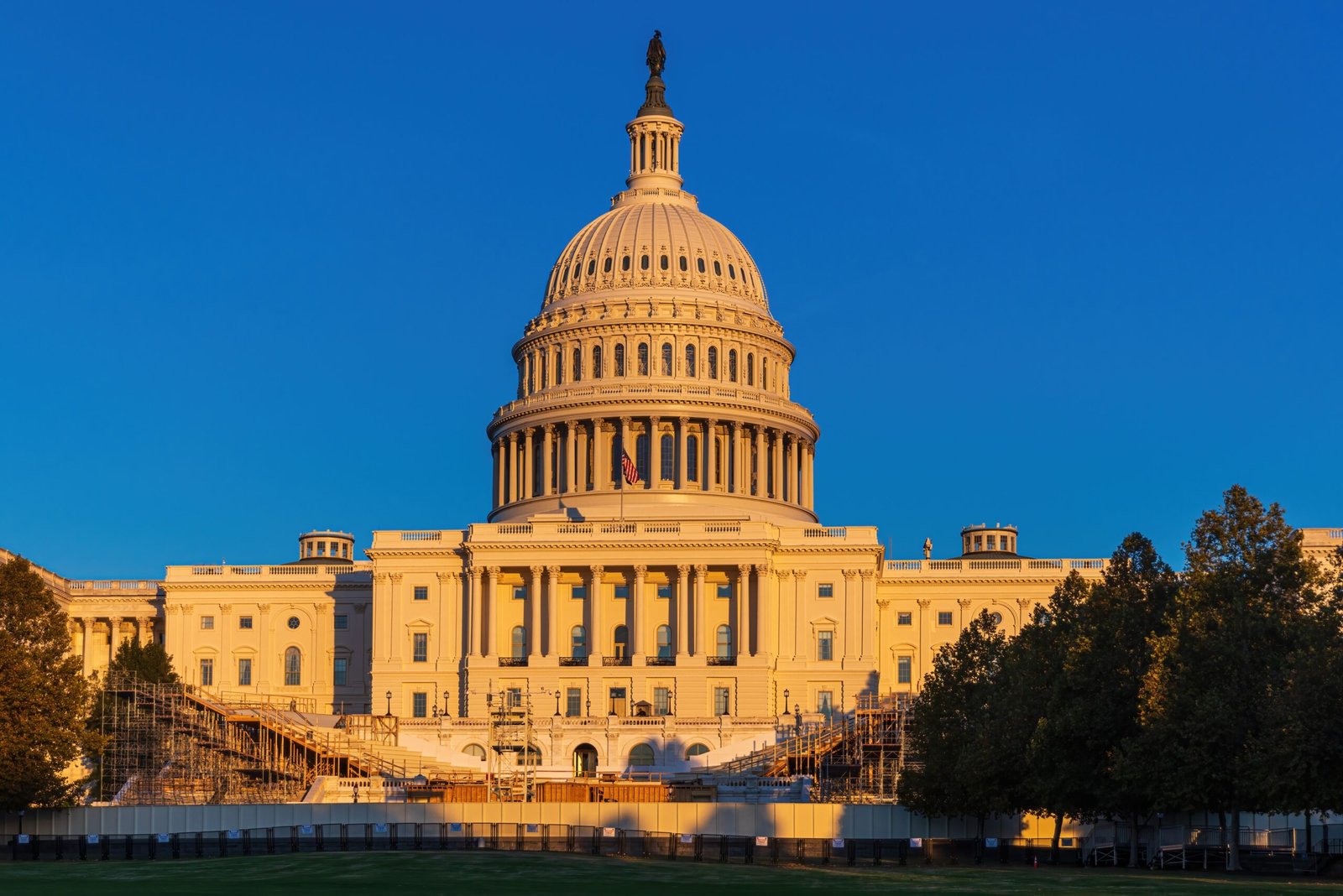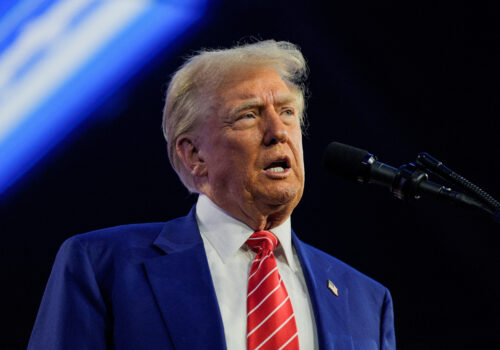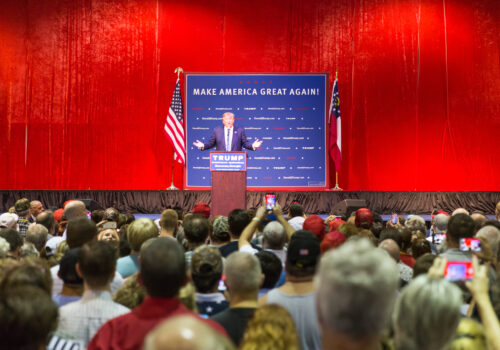Uncertainty reigns as President Donald Trump settles in. The flurry of executive orders and policy statements, especially at Senate confirmation hearings for Trump’s nominees, have clarified a few issues. The rest of Trump’s promised actions and their potential impacts, however, remain uncertain. Against this backdrop, it is understandable that the current range of forecasts for US economic growth in 2025 is unusually wide—from 1.5 percent to 2.7 percent. In fact, the US Chamber of Commerce has argued that a 2025 growth rate of more than 3 percent is likely. Likewise, expected growth in labor productivity has ranged from 1.5 percent to 3 percent in 2025. By emphasizing certain lines of policy actions and developments, it is possible to present plausible scenarios for either slow or strong growth prospects.
The slow growth scenario is based on the assessment that the tariffs Trump is threatening would push inflation up from the annual 3 percent in December 2024. If that happened, the Federal Reserve would be cautious about any additional easing moves. Moreover, tariffs in Trump’s first Presidency have been shown to weaken growth as well. Promised tax cuts, including next year’s extension of the 2017 Tax Cuts and Job Act, would also keep the federal budget deficit high. The deficit is currently at 6 percent of gross domestic product (GDP), which is remarkably high for an economy near full employment, with an unemployment rate of only 4.1 percent. As a result, US national debt held by the public would continue to increase from the 100 percent of GDP it has already reached. All these factors have contributed to rising bond yields. For example, ten-year Treasury yields have risen by about one hundred basis points, up to 4.5 percent since their lows around 3.5 percent in September. Moreover, deportation of undocumented immigrants could reduce the growth of the labor force—88 percent of which has been due to net increases in immigrant workers in recent years. This would weaken GDP growth. Implicit in this scenario is that labor productivity, which has grown by 2.3 percent per year from 2023 to 2024, would revert back towards its 2010 to 2022 average rate of 1.5 percent.
By contrast, the strong growth scenario is built upon President Trump’s intention to significantly deregulate the economy. He also is keen to promote investment in artificial intelligence (AI) and crypto assets, to encourage the exploration and drilling of oil and gas, and to cut corporate taxes. These steps are expected to release the “animal spirits” fueling investment spending, corporate profit, and economic growth. Labor productivity would continue to increase, reverting to the long-term (1950 to 2009) average rate of 2.5 percent, making a higher trend growth rate of up to 3 percent a reasonable estimate. Belief in this possibility has helped keep equity markets resilient, with the S&P 500 index up by more than 3 percent in the past three months, despite rising bond yields.
One way to assess which of these two scenarios is more likely is to investigate the main drivers of the recent rise in bond yields. According to J.P. Morgan, the increase in ten-year US Treasury yields of around one hundred basis points can be explained by growth expectations and uncertainty, while monetary expectations have played a much smaller role.
J.P. Morgan’s interpretation of rising bond yields seems to be consistent with other market developments. For example, ten-year yields on Treasury Inflation Protected Securities, which reflect real yields, have increased by sixty-eight basis points since late October 2024, reaching 2.23 percent today. The term premium on ten-year Treasuries, compensating holders of long-term bonds for uncertainty—including uncertainty of the path of short-term interest rates over the lifetime of the bonds—has risen significantly over the past year to 1.24 percent. However, the spread between ten-year Treasury yields and interest rate swaps has remained stable, between eighty to eight-five basis points since July 2024. This spread indicates a current lack of investor concerns about budget deficits and substantial supply of new Treasuries. Moreover, inflation expectations as measured by the Federal Reserve Bank of New York’s Survey of Consumer Expectations are stable at 3 percent at the one-year horizon. They are mixed in the longer term, increasing from 2.6 percent to 3 percent at the three-year horizon and declining from 2.9 percent to 2.7 percent at the five-year horizon.
All told, market developments behind the rise in ten-year Treasury yields seem to indicate that the strong growth scenario is more likely—but then market sentiment can change on a dime! How sustainable is this prospect from today’s perspectives?
An indication is found in the 2026 growth forecasts—which tend to show a slowdown from the 2025 estimates. For example, the US Congressional Budget Office (CBO) expected 2.3 percent in 2025 and 1.9 percent in 2026. The Organization for Economic Co-operation and Development estimated 2.8 percent this year and 2.4 percent next year. Overall, the range of 2026 forecasts has narrowed down to 1.9 percent to 2.4 percent. This seems to reflect minimal expectations for further improvement in labor productivity growth. In fact, a reversal toward a lower average once observed in the decade before the Covid-19 pandemic is possible instead.
In a nutshell, while near-term growth prospects can be supported by releasing the “animal spirits,” it may not be sustainable longer term. One obvious problem is the unsustainability of the US fiscal trajectory. The CBO has estimated a federal budget deficit around 6 percent of GDP as far as the eye can see, boosting the national debt in public hands up from 100 percent of GDP to 118 percent in 2035—surpassing its previous high of 106 percent in 1946. The only factor that could help sustain this debt trajectory is enduring improvement in labor productivity. While uncertain at present, increased labor productivity is not implausible given the surge in technological advances, especially in AI.
Hung Tran is a nonresident senior fellow at the Atlantic Council’s Geoeconomics Center and senior fellow at the Policy Center for the New South; a former senior official at the Institute of International Finance and International Monetary Fund.

At the intersection of economics, finance, and foreign policy, the GeoEconomics Center is a translation hub with the goal of helping shape a better global economic future.
Further reading
Fri, Jan 17, 2025
Eight big ideas for the second Trump administration
New Atlanticist By Atlantic Council experts
President-elect Donald Trump has promised to shake up US policies early in his second term. Atlantic Council experts share eight ideas on where to start.
Fri, Nov 22, 2024
Sanctions expectations in a second Trump administration
Econographics By Daniel Tannebaum
Sanctions are poised to remain a cornerstone of US foreign policy under a second Trump administration. With a focus on Iran, Russia, and potentially China, Trump’s team may lean on tools like secondary sanctions while navigating a tense geopolitical environment.


